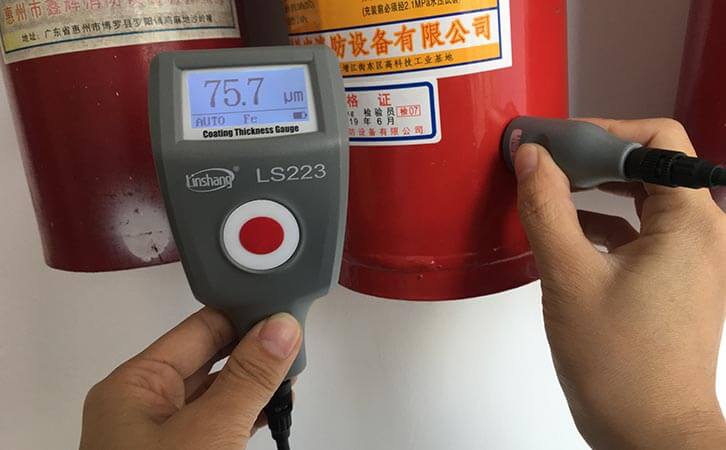Paint Thickness Checker | New Metal Anticorrosion Technology
With the development of science and technology, metal surface treatment technology is also diversified. What are our common metal anticorrosion methods? Which is the new technology worth learning? Today, we will answer your doubts.
1. Phosphating of metals
After the steel products are degreased and derusted, they are immersed in an acid solution with a specific composition to form a water-insoluble acid film on the metal surface. This process is called phosphating. The phosphating film is dark gray to black gray and the thickness is generally 5-20 μm. It has good corrosion resistance in the atmosphere. The membrane is a microporous structure and has a strong adsorption capacity for paints. If used as a primer for paints, the corrosion resistance can be further improved.

2. Oxidation of metals
Adding steel products to a mixed solution of NaOH and NaNO2 and then make heating treatment, a blue oxide film (mainly composed of Fe3O4) with a thickness of about 0.5-1.5 μm can be formed on the surface.This process is called bluing, or bluing for short. This oxide film has greater elasticity and lubricity. Therefore, parts of precision instruments and optical instruments, spring steel, thin steel sheets, thin steel wires and other commonly used blue processing.
3. Metal alloy catalytic liquid treatment
Put the cleaned workpiece in the alloy catalyst solution and soak it for 10-15 minutes to get the finished product. The temperature of the alloy catalytic liquid is controlled at a constant temperature of 80 ° C to 85 ° C. The alloy catalytic liquid reacts with the workpiece itself to form a new alloy layer. It has a strong binding force, at 350 ~ 400Mpa, it does not fall off. The cleaning water of the alloy catalytic liquid is recycled and repeatedly added. It has high environmental protection and is widely used in various fields.
The above three are the common metal anticorrosion methods in life. It should be noted that the green environmental protection process strongly advocated by the state has been favored by the industry. In addition, in the process of metal anticorrosion, the inspection of the metal surface anticorrosive coating is also an extremely important step.
4. Metal anti-corrosion coating thickness detection
The coating thickness is an important indicator of whether the anticorrosive coating works. Measuring the coating thickness with an anti-corrosion paint thickness checker is one of the most important quality inspection indicators of an anti-corrosion coating. Anticorrosive coatings are mainly used in various industries such as gas pipelines, communication cabinets and bus stops. Because the anticorrosive layer has the characteristics of anticorrosiveness, usually the anticorrosive coating is relatively thick. The range of the anti-corrosion paint thickness checker is relatively high. Usually we use the Linshang LS223 anti-corrosion paint thickness checker to check the thickness of the anti-corrosion layer. For anti-corrosion coatings, anti-corrosion paint thickness checkers are almost essential instrument for coating thickness measurement.
- High precision coating thickness gauge for used car
- Automotive paint protection films coating thickness gauge
- Plating Thickness Measuring Instrument for Detecting Anti-corrosion Coating
- Linshang LS220, LS191, LS160A– Necessary for Car Cover Inspection
- Coating Thickness Gauge for Second Hand Vehicle
- Zero Adjustment Step of Coating Thickness Gauge
